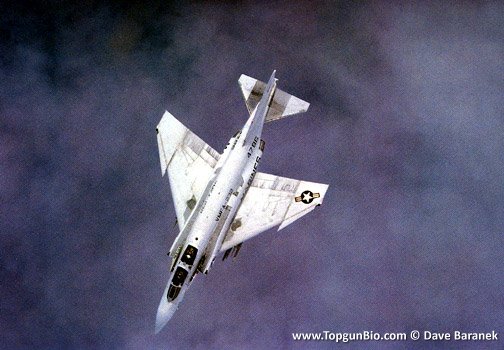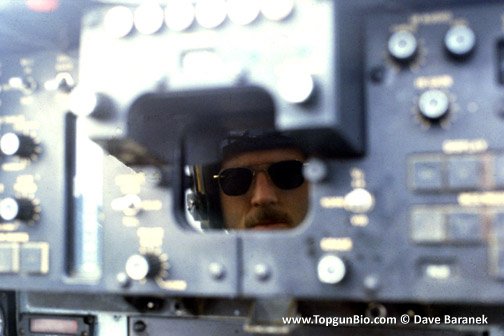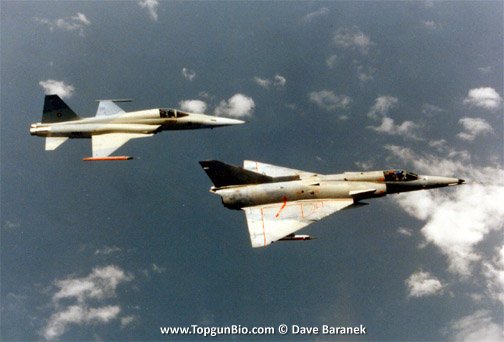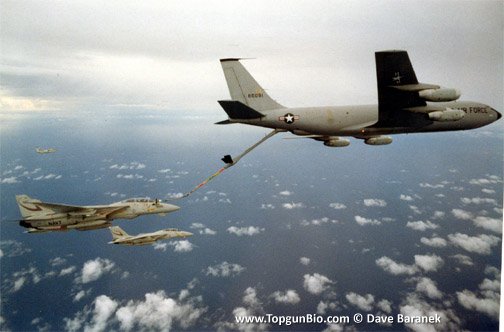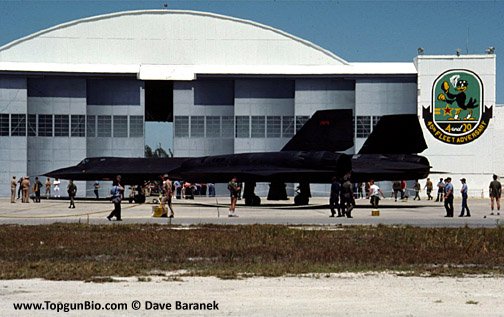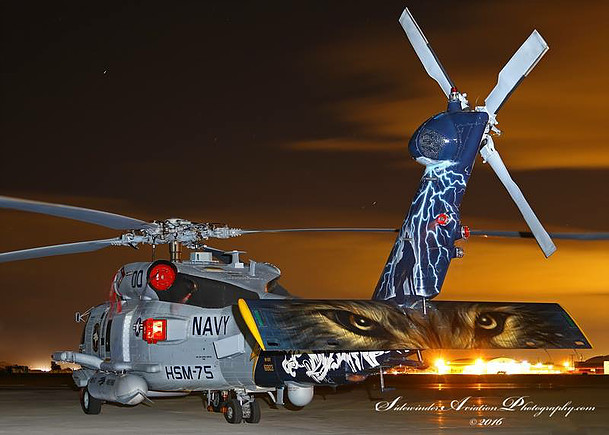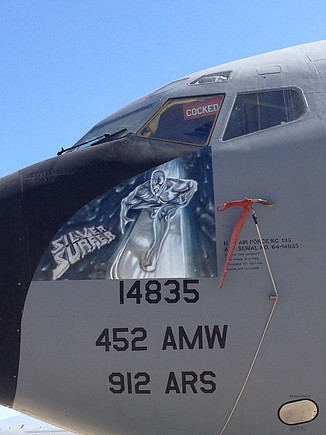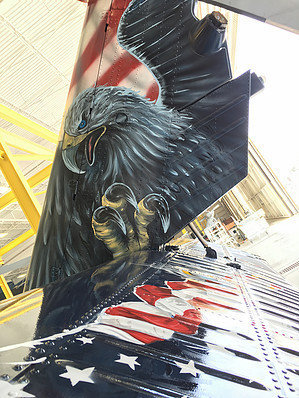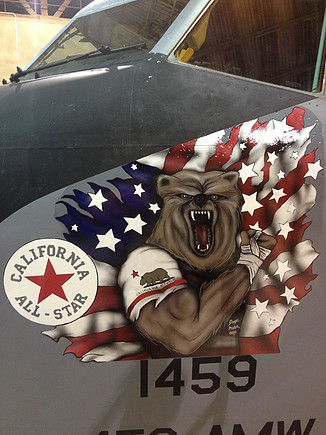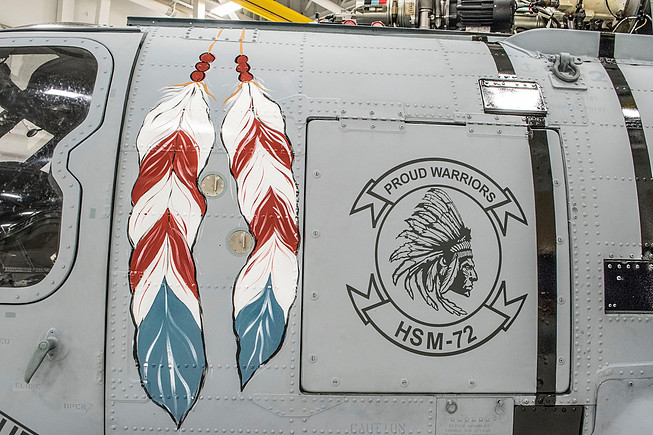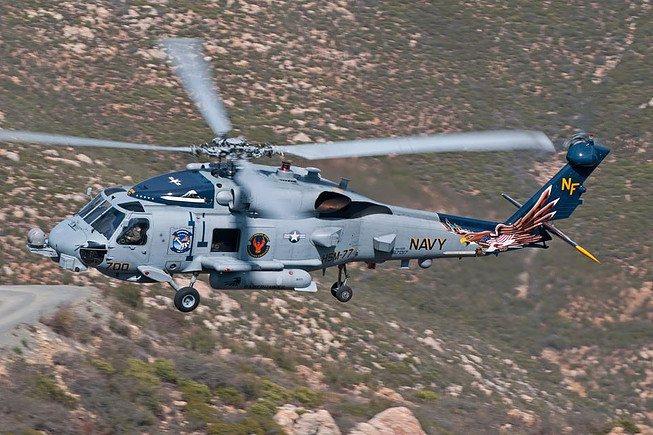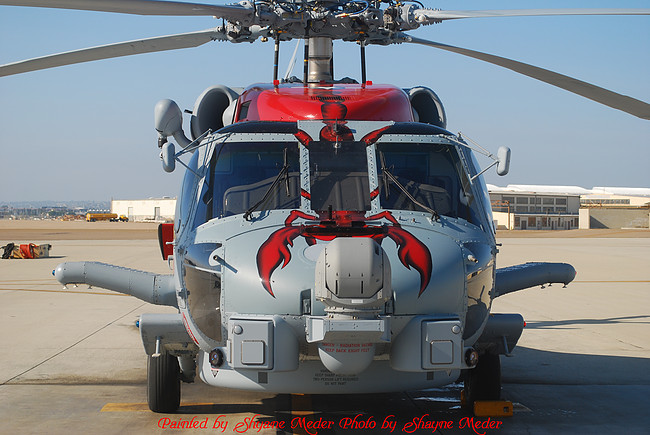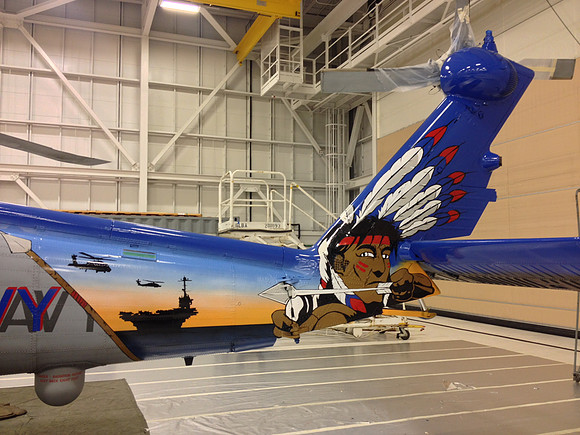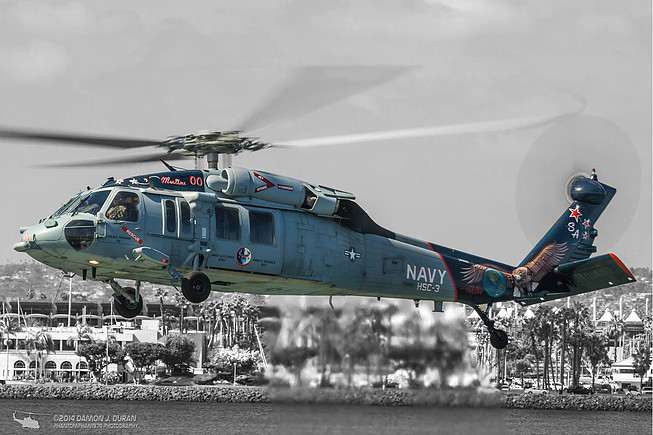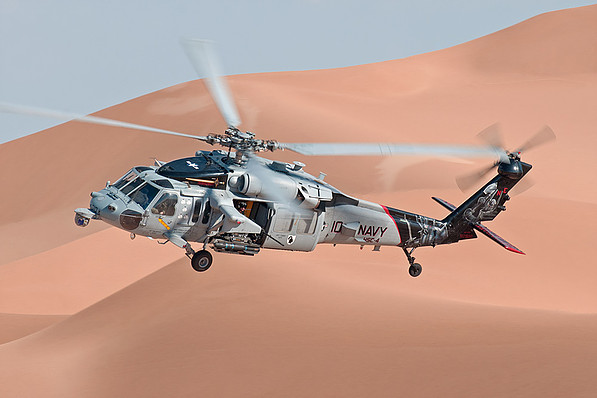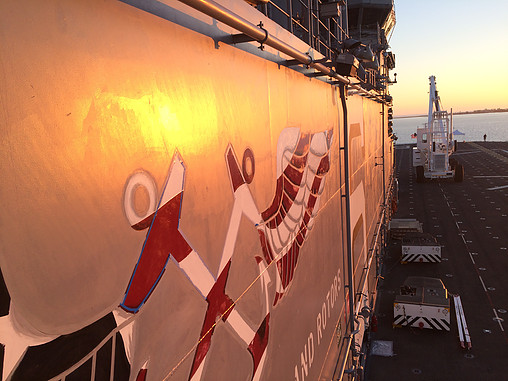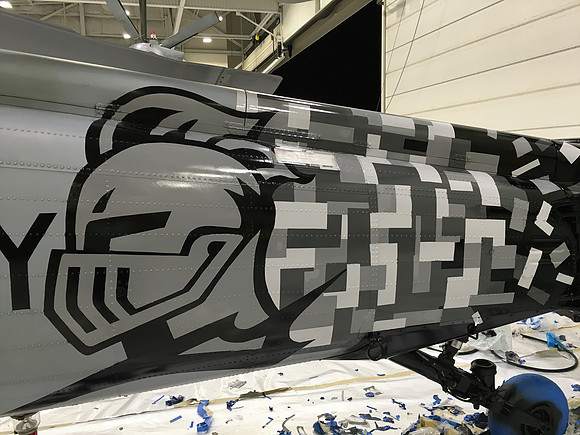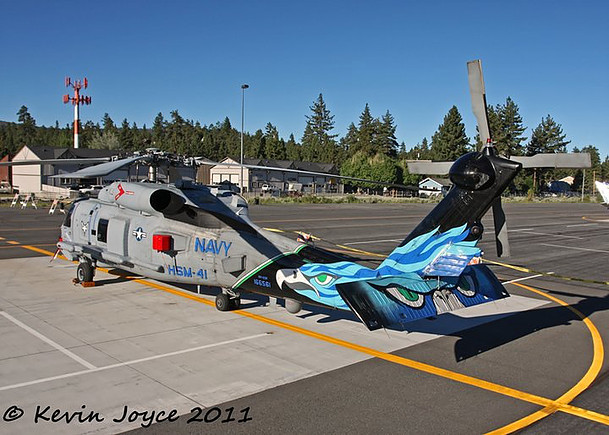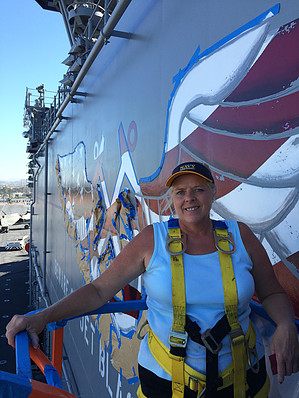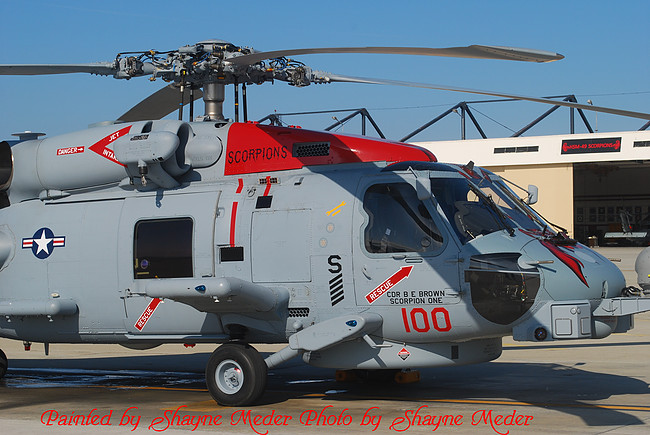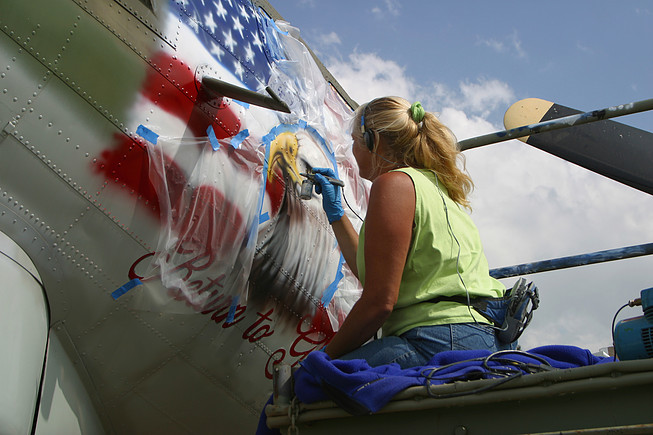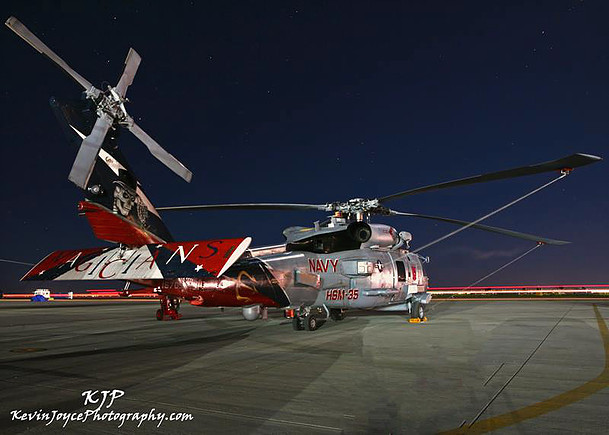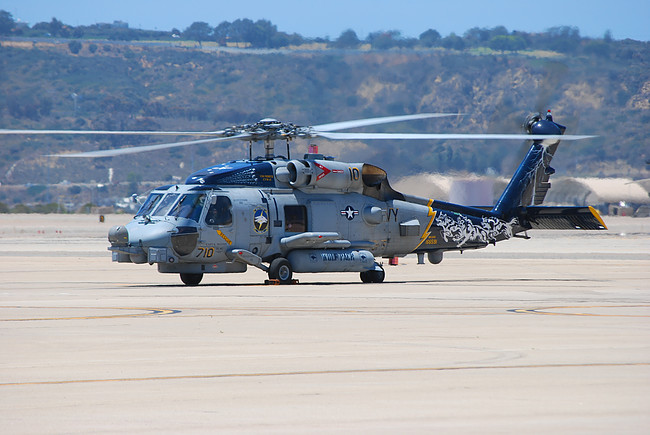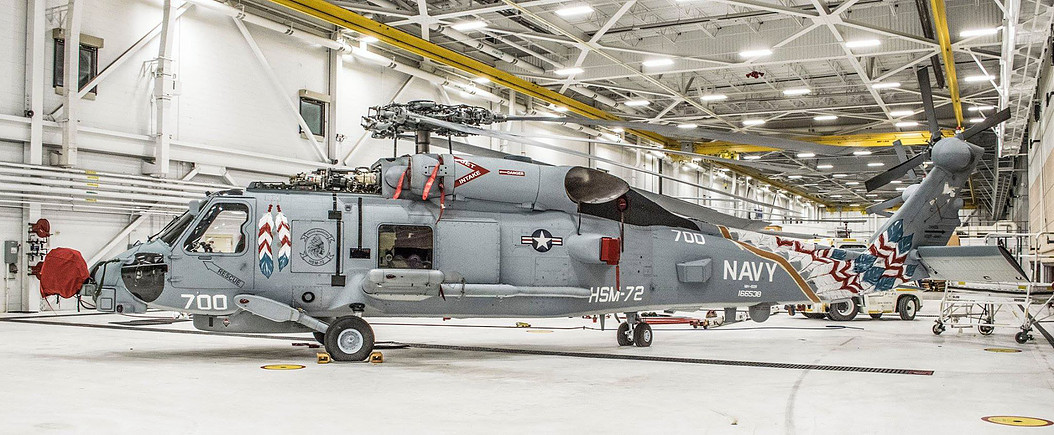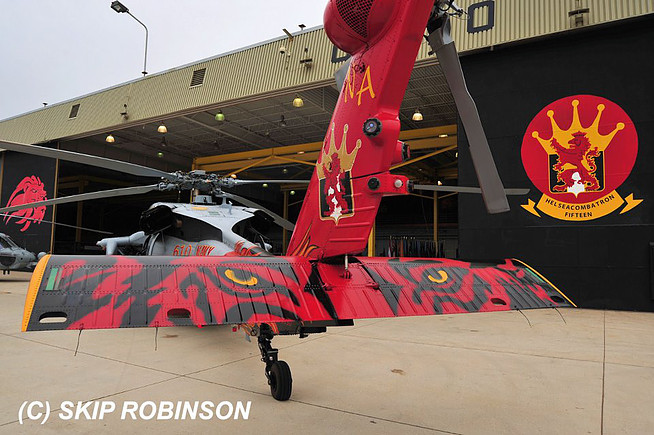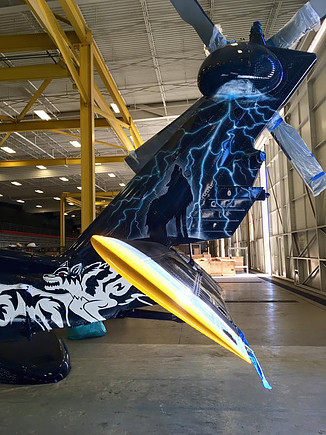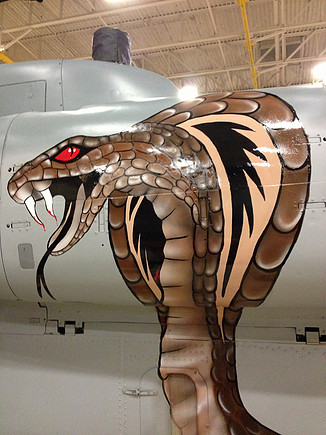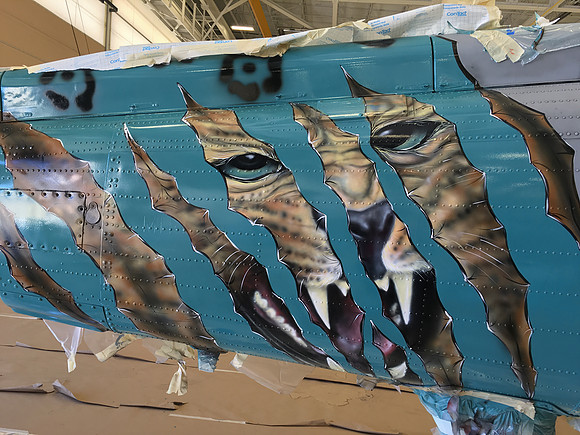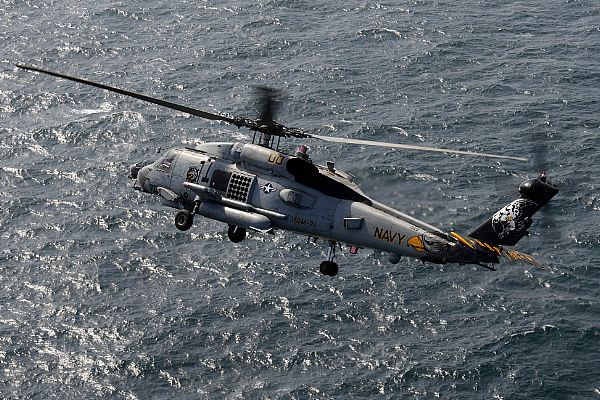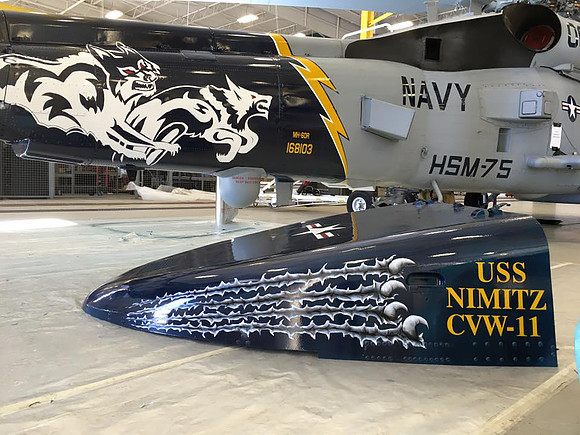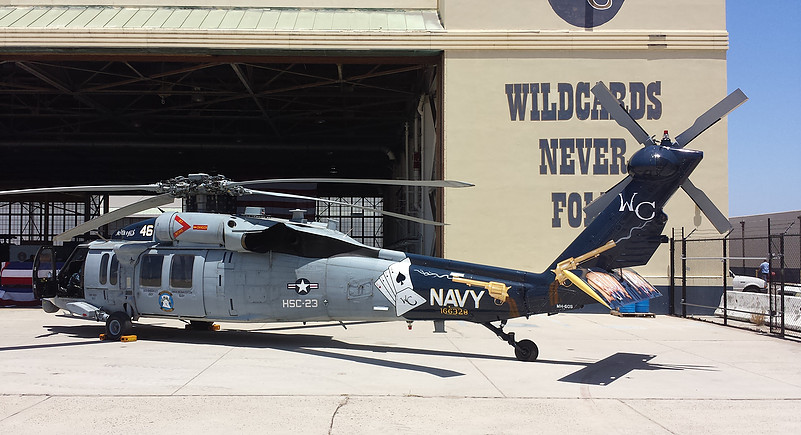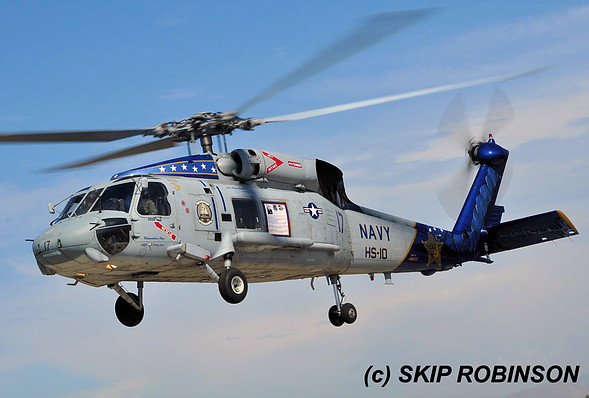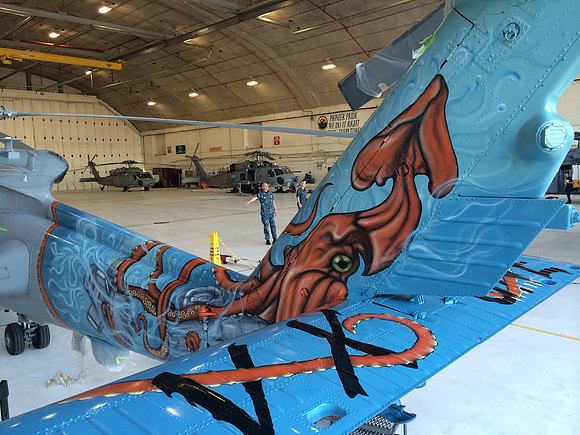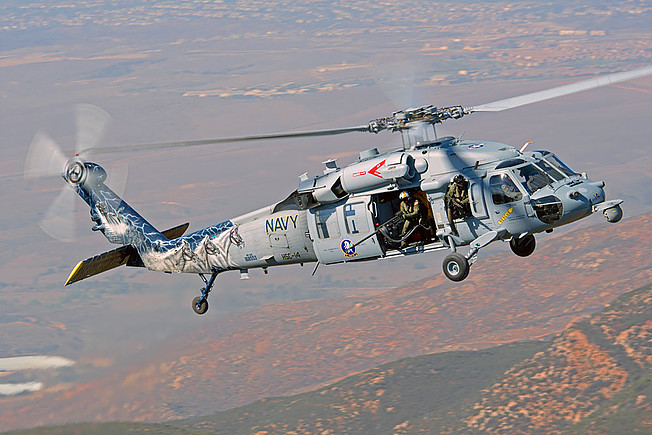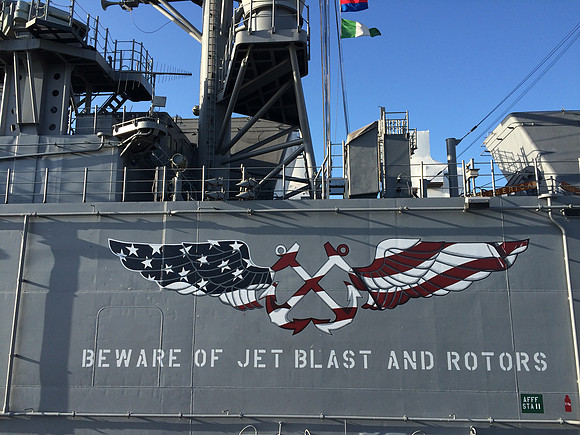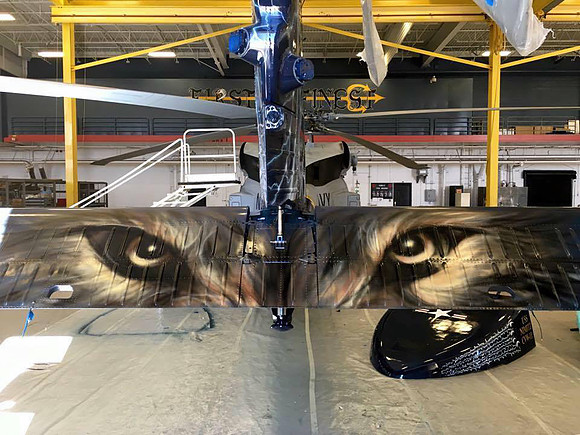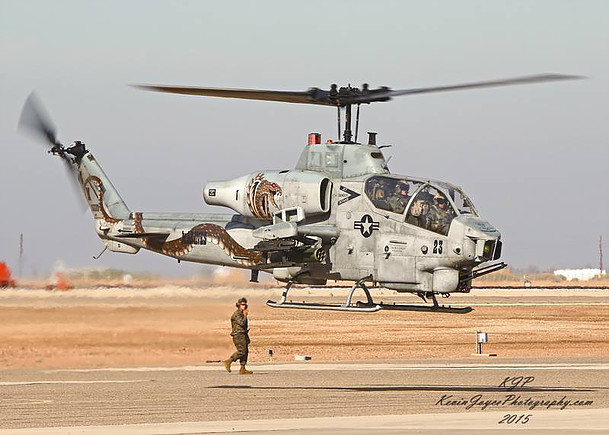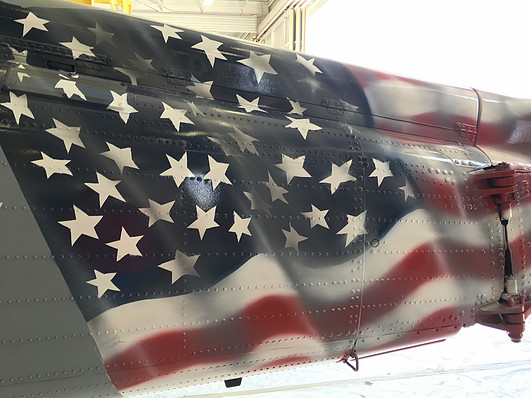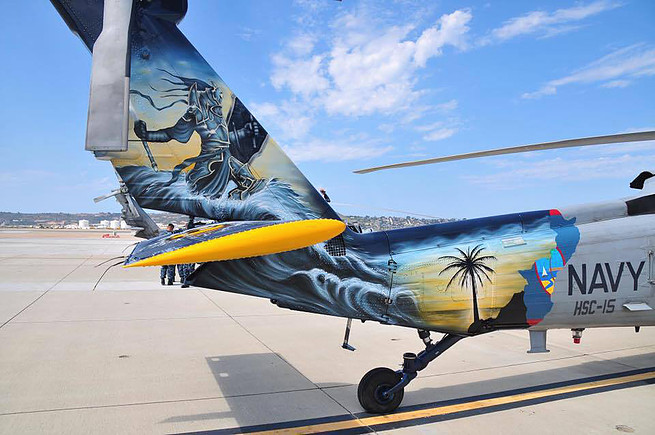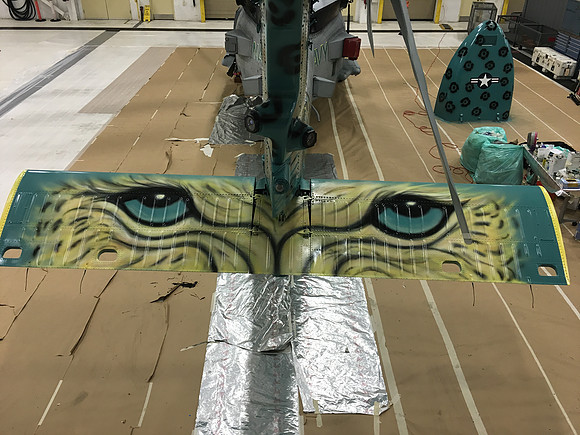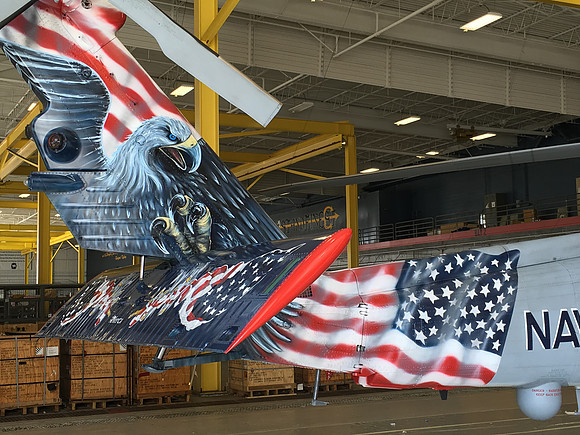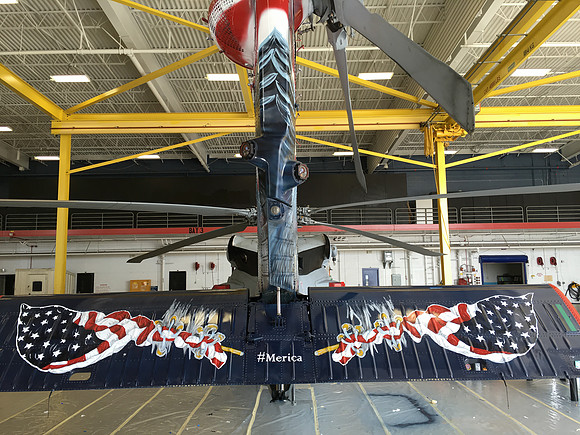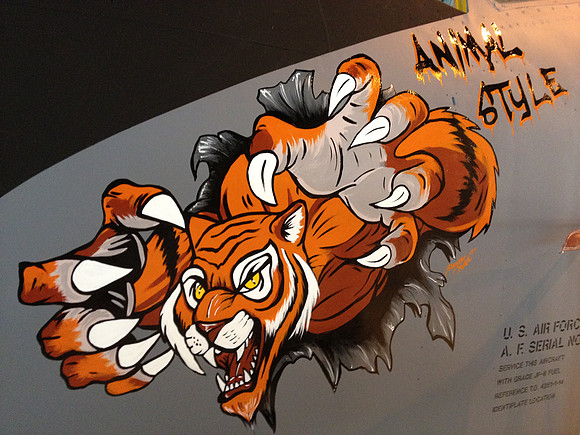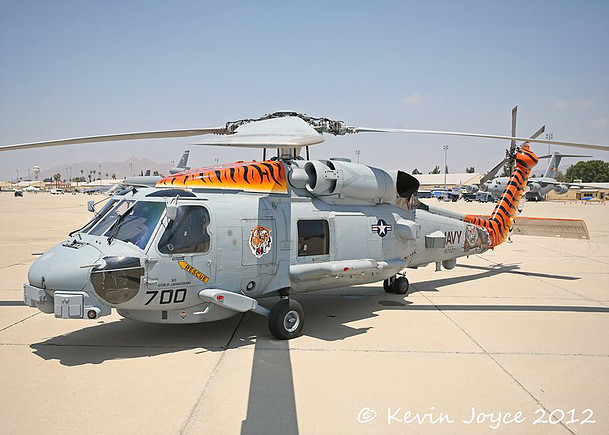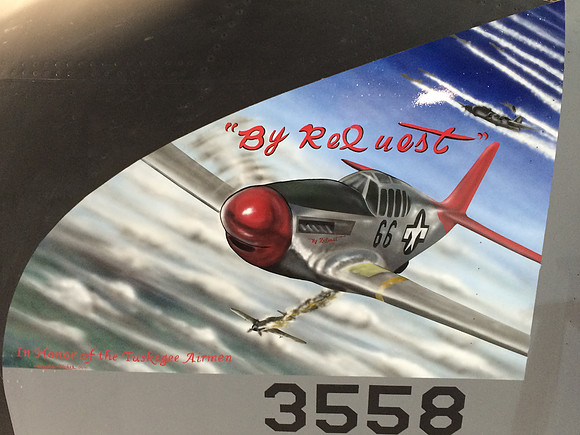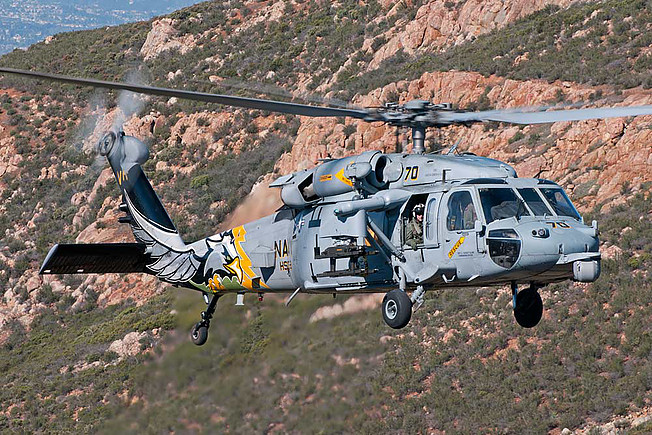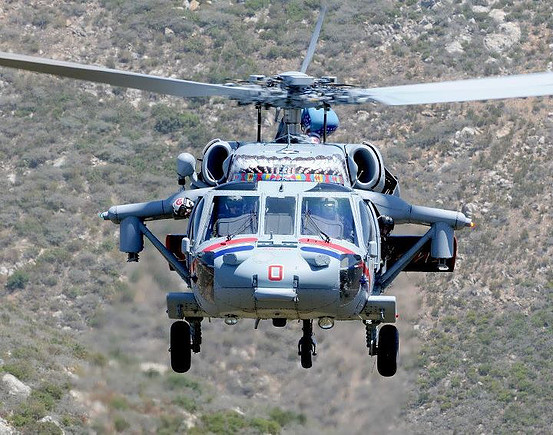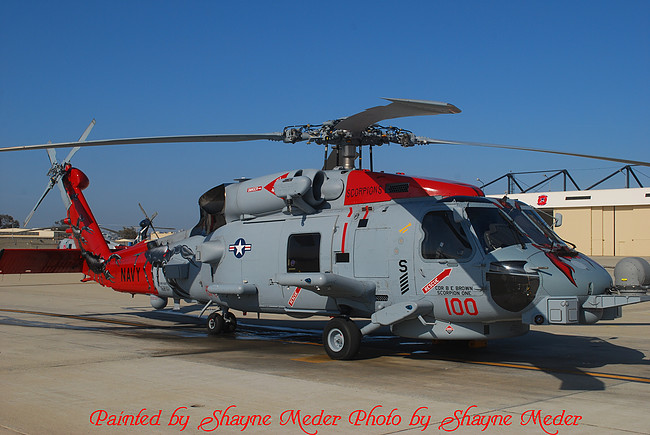
Episode #45. The Fighter Factory at Biplanes and Triplanes - **Explicit Language!**
The Fighter Factory - VA Beach
In this episode, The Hangardeck Podcast interviews the Fighter Factory Maintenance Leadership team in the Navy Hangar at the Military Aviation Museum at the Biplanes and Triplanes airshow 2016. Standby and Hold On as TK and the boys tell us how it is with Warbird Maintenance. This episode is tagged explicit for language.
Episode #44. The F-14 Tomcat and Topgun with US Navy Veteran Dave "BIO" Baranek.
In this Podcast episode, Pitchlock Pete and Whitey are on location for an interview with former F-14 Skipper and Topgun Instructor Dave "Bio" Baranek. He is an accomplished author of his first hand accounts in the US Navy and the books are Topgun Days and Before TopGun Days respectively. Check out Bio at http://www.topgunbio.com/ You can find his books on Amazon.com.
Episode #43. Flygirlpainters.com interview and the Southwest Engine Failure investigation update.
In this episode, The Hangardeck Podcast Interviews Aircraft Artist and Painter Shayne Meder - founder and Aritist at www.flygirlpainters.com and then we discuss the preliminary news release from the Southwest Engine Failure.
Episode #42. Lithium Batteries and the P-8A Poseidon Intercept.
In this episode, Pitchlock Pete and Jackscrew Jesse give unedited views of the most recent Samsung Galaxy 7 Lithium Battery issue regarding aviation and also talk about US Military Air to Air Intercepts with Fighter Jets.
Episode #41. The WWII Messerschmitt Me 262 with Test Pilot Wolfgang Czaia.
Wolfgang with the Fighter Factory Manager "TK" with the Military Aviation Museum's ME-262.
In this Episode of the Hangardeck Podcast, the team has the privilege to interview aviation and aerospace expert Test Pilot Wolfgang Czaia. Wolfgang discusses the first production jet fighter, the ME-262, and the history, flying characteristics and how many reproduction aircraft are flying today. It’s an amazing discussion that we guarantee to satisfy your itch for unique aviation discussions.
We have been working on this episode and are very proud to bring our audience this special interview with Wolfgang. Wolfgang flies the aircraft once a year at the Military Aviation Museum – “Warbirds over the Beach” so if you are an aviation enthusiast, you MUST see this first hand.
The Hangardeck Podcast would like to thank our audience for the continued support on our venture. We reached a milestone of over 12,000 downloads and continue to grow our audience.
The Hangardeck Podcast Team continues to strive and bring great interviews for the aviation enthusiast. Tell us how we are doing by dropping Pitchlock Pete a direct comment at info@thehangardeck.com.
Video Credit: Fight To fly - This is a compilation of video and a few photographs I was able to capture and compile for video. I had originally attempted this a year ago, shortly after its delivery to Jerry Yagen, however, technical issues crept up, preventing me from finishing it until now.
Episode #40. WWII Luftwaffe Messerschmitt Bf 109 Pilot Hans Meyer.
WWII Luftwaffe Pilot Mr. Hans Meyer back in the seat of the BF-109G
In this Episode of The Hangardeck Podcast, we have the privilege of talking with WWII Luftwaffe Messerschmitt Bf 109 Pilot Hans Meyer.
Hans Meyer was born in 1927 and grew up in Brandenburg, Germany. Ever since his youth he was interested in aviation, so at the age of 14, Hans joined the Flieger-HJ and learned to fly the Schneider SG-38 (Flying Glider). When he was 16, he earned himself the Glider Pilot Proficiency Badge ‘C’ level and signed up for the Luftwaffe a year later in 1944 to become a fighter pilot.
After Hans completed his flight training in Werneuchen with the Messerschmitt Bf 109, he was transferred to Jagdgeschwader 54 “Grünherz” and was stationed on the Eastern Front. There he distinguished himself as a fighter pilot and was credited with a total of 5 air victories.
Look for his Book "One Soldier From The Other Side" by Hans Meyer and Lar Stampe.
Tune in to more great Episodes at The Hangardeck Podcast.
Episode #39. Antarctic Aviation Down Under with Special Guest Matthew McArthur.
Matthew McArthur in the harshest aviation environment on the Planet Earth.
Aviation Enthusiast Matthew McArthur from Melbourne, Australia Skype's into The Hangardeck Podcast to discuss Antarctic Aviation and the History of flying in this unforgiving environment. Matthew's expert commentary is quite fascinating and enthusiastic as he describes the history and his experiences while working there.
Matthew also is the host and creator of the Ice Coffee Podcast and discusses his passion about Antarctic exploration and base his content on my his extensive research on the topic and his own experiences working as a diver at Scott Base.
During Matthew's time on the ice he flew in a range of types not normally a transport option to Australian civilians and found himself spending time at the sea ice runway and local helipads as much as he could where he could combine his passion for Aviation and the Antarctic.
Tune into Matthew at his podcast - The Ice Coffee Podcast.
Episode #38. The State of The Hangardeck Union and Introducing "Jackscrew Jesse".
A great State of the Hangardeck Podcast Union. Tune into the explosion of the Podcast this year and our discussion on our upcoming events and our relationships with the Military Aviation Museum and the Patuxent River Naval Air Museum.
We are also introducing our new Co-Host "Jackscrew Jesse" Olmstead to the show.
Episode #37. The NASA Super Guppy with Program Manager Dave Elliott.
Our first Podcast from the Patuxent River Naval Air Museum with our Special Guest Mr. Dave Elliott. Dave is the Program Manager for the NASA Super Guppy Transport Aircraft. This episode The Hangardeck Podcast team continue the discussion with Dave on the specifics of the aircraft, history and unique cargo that the aircraft is designed to transport.
The Patuxent River Naval Air Museum staff was extremely hospitable and welcoming to the team. We look forward to monthly Podcast Recordings with a unique guests supporting diverse aviation topics.
Episode #36. Warbirds over the Beach with SNJ Pilots "Jackie" and "Cooler".
The Hangardeck Podcast Team Traveled to Virginia Beach to participate in the Warbirds Over the Beach 2016 Airshow. We were fortunate to witness the first flight of Jerry Yagen's Messerschmitt Bf-109G. First, we have to say, Jerry is an amazing host and provided us with the opportunity to record some amazing people he has flying and working with these unique aircraft.
This episode we recorded on Saturday May 21, 2016 with SNJ Pilots "Jackie" and "Cooler" who were flying the photography shoot aircraft this weekend in formation to help capture rare Warbird formation footage for the Military Aviation Museum.
Episode #35. The Fighter Factory - Tom "TK" Kurtz III - General Manager.
Warbirds over the Beach with Fighter Factory General Manager "TK" and THE HANGARDECK PODCAST Team.
The Hangardeck Podcast Team Traveled to Virginia Beach to participate in the Warbirds Over the Beach 2016 Airshow. We were fortunate to witness the first flight of Jerry Yagen's Messerschmitt Bf-109G. First, we have to say, Jerry is an amazing host and provided us with the opportunity to record some amazing people he has flying and working with these unique aircraft.
This episode we recorded Saturday May 21, 2016 with Fighter Factory General Manager "TK" and talk about the Fighter Factory and his maintenance team.
The Fighter Factory is the restoration & maintenance facility of the Military Aviation Museum, a recently built hangar located on the grounds of the Virginia Beach Airport located in Pungo, VA. The Team maintains and restores WW2 & WW1 military aircraft.
With a large inventory of flying vintage aircraft from both the First World War and the Second World War and also other vintage aircraft from from the Korean war . Military warbirds, fighters, bombers, training aircraft and liaison planes. Go and see all these warbirds restored to their former glory on show at the Military Aviation Museum.
What a great interview with "TK" and tune in for more episodes and great interviews on The Hangardeck Podcast.
Episode #34. Warbirds over the Beach with Spitire Pilot Big John and his son Little John.
The Hangardeck Podcast Team Traveled to Virginia Beach to participate in the Warbirds Over the Beach 2016 Airshow. We were fortunate to witness the first flight of Jerry Yagen's Messerschmitt Bf-109G. First, we have to say, Jerry is an amazing host and provided us with the opportunity to record some amazing people he has flying and working with these unique aircraft. This episode we recorded on Saturday May 21, 2016 with Pilot John "Pappy" Mazza. Pappy discusses his time at the Military Aviation Museum.
John, "Pappy" Mazza has been flying his entire life; as a matter of fact he took his first plane ride at the age of 1 Month. When Pappy was nine years old he was given a check ride by an FAA flight examiner and passed the check ride for a private pilot's license due to Pappy being only nine years old.
On his 16th birthday, he soloed and went on to et his commercial license, single engine land, multi-engine land and instrument rating. Today, Pappy has over 4,500 hours in over 40 different aircraft, flying everything from a J-3 to an F-16. He has flown in aerobatic competitions and raed in both the formula "V" and formula one class of air racing. Today, he flies the museum's PT-17, SNJ, P-40, B-25, PBY Catalina, and of course the Spitfire.
What a great interview with Big John and his son Little John and Stay Tuned for more episodes and great interviews on The Hangardeck Podcast.
Episode #33. Warbirds Over the Beach - Military Aviation Museum owner Jerry Yagen.
The Hangardeck Podcast Team Traveled to Virginia Beach to participate in the Warbirds Over the Beach 2016 Airshow. We were fortunate to witness the first flight of Jerry Yagen's Messerschmitt Bf-109G. First, we have to say, Jerry is an amazing host and provided us with the opportunity to record some amazing people he has flying and working with these unique aircraft. This exclusive interview took place with Mr. Jerry Yagen on Sunday, May 22, 2016.
The Military Aviation Museum in Virginia Beach, Virginia, is home to one of the world's largest collections of Warbirds in flying condition. It includes examples from Germany, Japan, Russia, the United Kingdom and the United States, from both World War I and World War II, although the complete collection ranges from the 1910s to the early 1950s.
Jerry's mission is to "preserve, restore and fly these historic aircraft and to allow a new generation to experience and learn from what their pilots might have endured ... in the skies so very far from home."
Unlike most other collections, which are displayed in a static museum environment, almost all of the historic aircraft at the Museum have been restored to flying condition. In twice-yearly major airshows (one in the spring for WWII planes, and one in the fall for WWI), as well as other special events, the aircraft fly again for the public to view and experience.
The Museum was founded by Jerry Yagen in 2005, and the museum's hangars were opened to the public in 2008. He had been collecting and restoring Warbirds since the mid-1990s, starting with the Curtiss P-40E Kittyhawk, so the creation of a museum to share the collection with the public was the logical next step.
There are a variety of sponsorship opportunities available at the museum. Sponsorship levels vary and may include benefits such as complementary admission to the museum, annual memberships, tickets to special events, promotion on the museum website, signage in the museum, and or other related sponsorship incentives depending on the sponsorship level agreed to. Check them out at www.militaryaviationmuseum.org.
The Hangardeck Podcast team is privileged to bring this episode to our subscribers. Leave us a comment and let us know how we are doing. Stay Tuned!
Episode #32. Warbirds Over the Beach with BF-109G Pilot Rick Volker
The Hangardeck Podcast Team Traveled to Virginia Beach to participate in the Warbirds Over the Beach 2016 Airshow. We were fortunate to witness the first flight of Jerry Yagen's Messerschmitt Bf-109G. First, we have to say, Jerry is an amazing host and provided us with the opportunity to record some amazing people he has flying and working with these unique aircraft. This episode we recorded on Sunday, May 22, 2016 with Pilot Rick Volker. Rick explains the flight characteristics of the BF-109G on it's first flight on May 20, 2016.
Rick Volker entered the competition aerobatic world by storm, winning numerous regional Unlimited contests, such as the Can-Am, Henry Haigh, and Kathy Jaffe Challenges. Rick is a former competitor in athletic events such as swimming, speed skating, bicycle racing, cross-country skiing and body building. Such is the type of conditioning required to fly at this level, as it tests the limits of human endurance. While flying Unlimited aircraft, Rick alternates between plus-11 and minus-9 Gs often in the same maneuver. Unlimited pilots train for this type of extreme flying with the same intensity as any other fitness sport.
He has competed in aerobatic competitions for many years in high performance aircraft such as the Pitts Biplanes and Sukhoi monoplanes. Rick is known for flying the WWII Supermarine Spitfire MK IX in a spectacular display of surface level aerobatics. He is one of a few pilots in the world qualified to fly the rare Messerschmitt Bf109E, and has flown the same serial number Bf109 as Hans-Joachim Marseilles in an air show dogfight routine vs. the Hawker Hurricane. His other qualifications include brilliant displays of the Hawker Hurricane MK XII and the Harvard Mk. IV. He was a member of the exclusive Canadian Heritage Flight team where he flew the Spitfire Mk.IX in close formation with the CF-18 fighter. He is a piston warbird, high performance, and formation aerobatic ACE (Aerobatic Competency Evaluator).
There is a common theme in all of Rick’s displays: complete mastery of the aircraft’s possible flight envelope, pushing the boundaries of both low and high speed limits, and artfully utilizing the smallest 3 D space to create a masterpiece of entertainment.
Rick is featured on the PBS series “The Aviators” Season 1, Episode 8.
Enjoy this Episode of our first on-site interview series of The Hangardeck Podcast from the Warbirds over the Beach 2016 Airshow.
Episode #31. The Helicopter Pilot with CDR Sam Maroon (ret.)
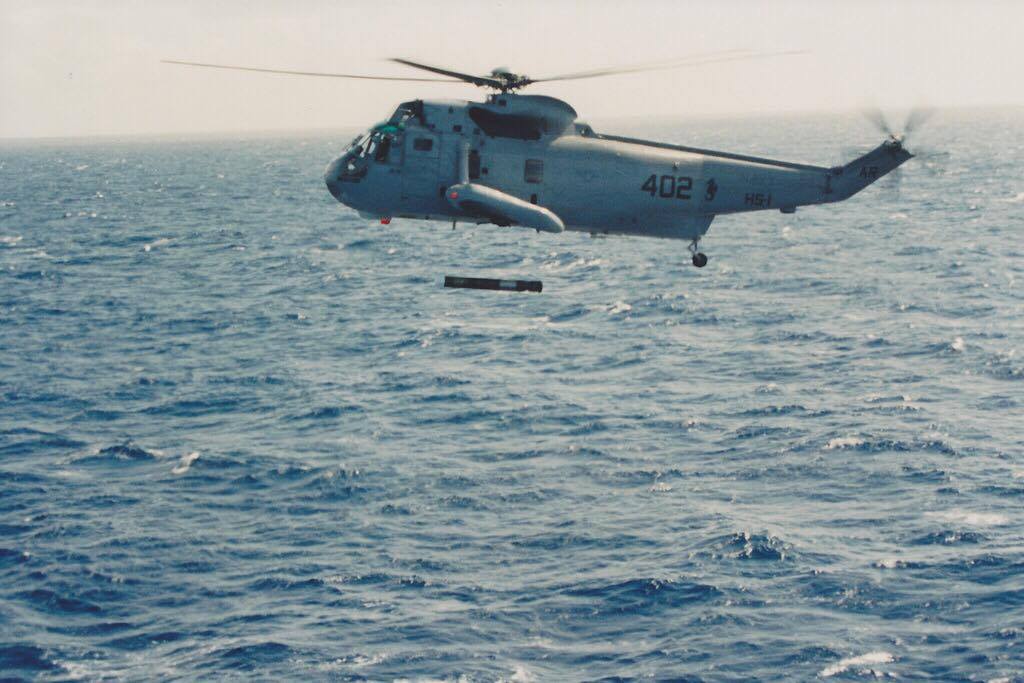

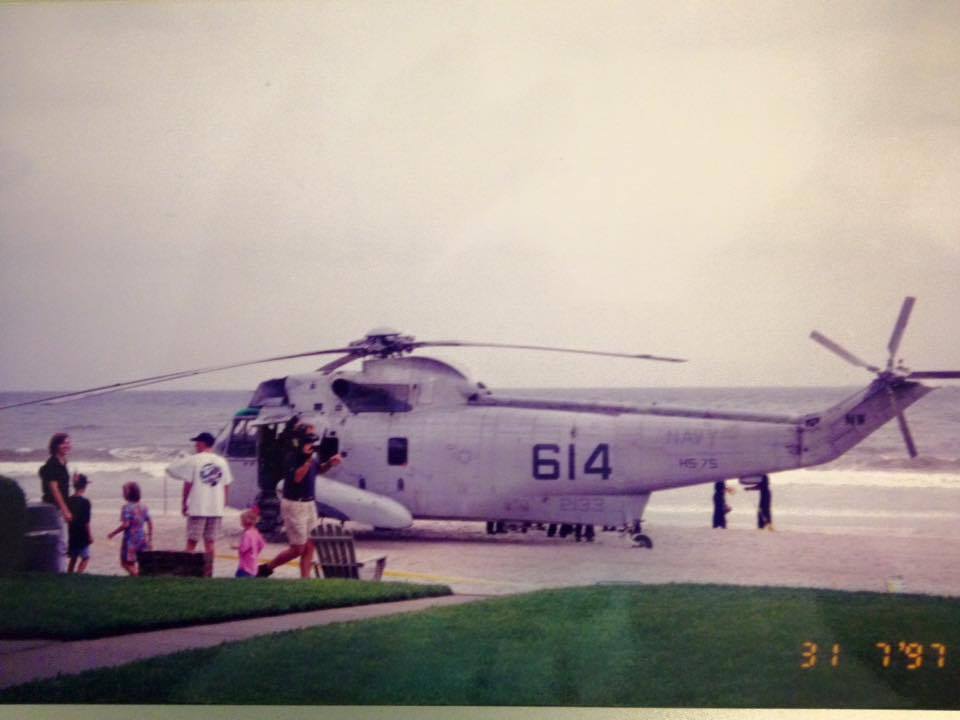
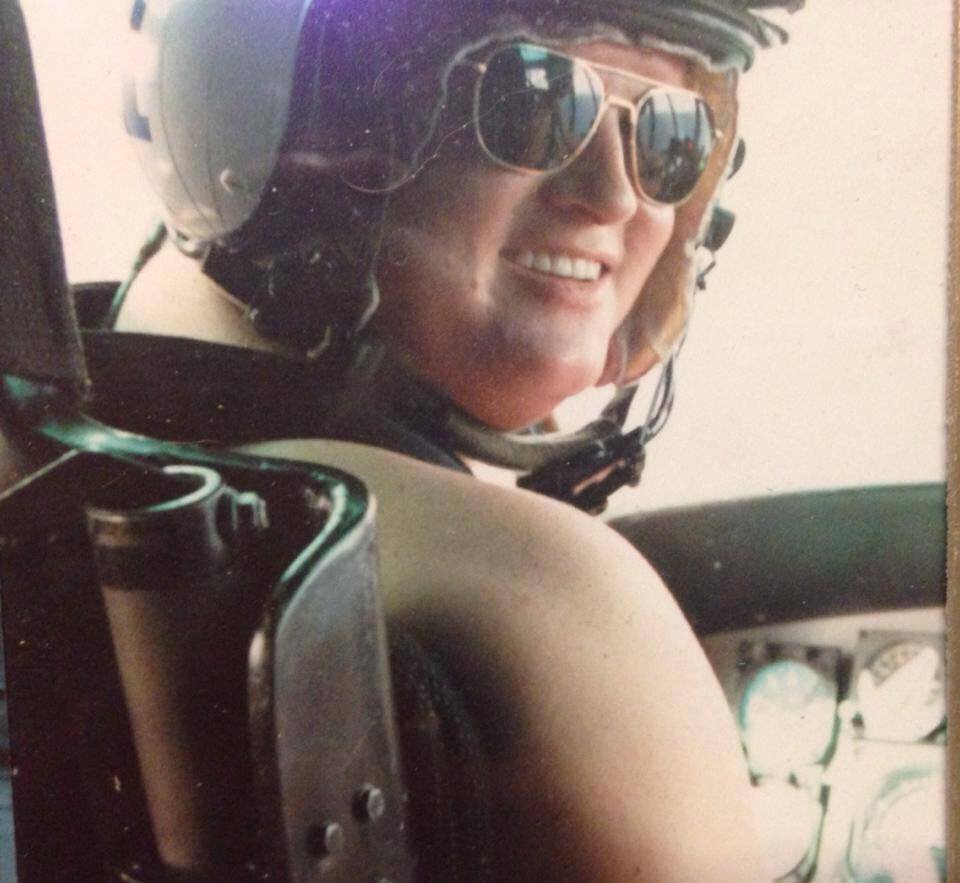
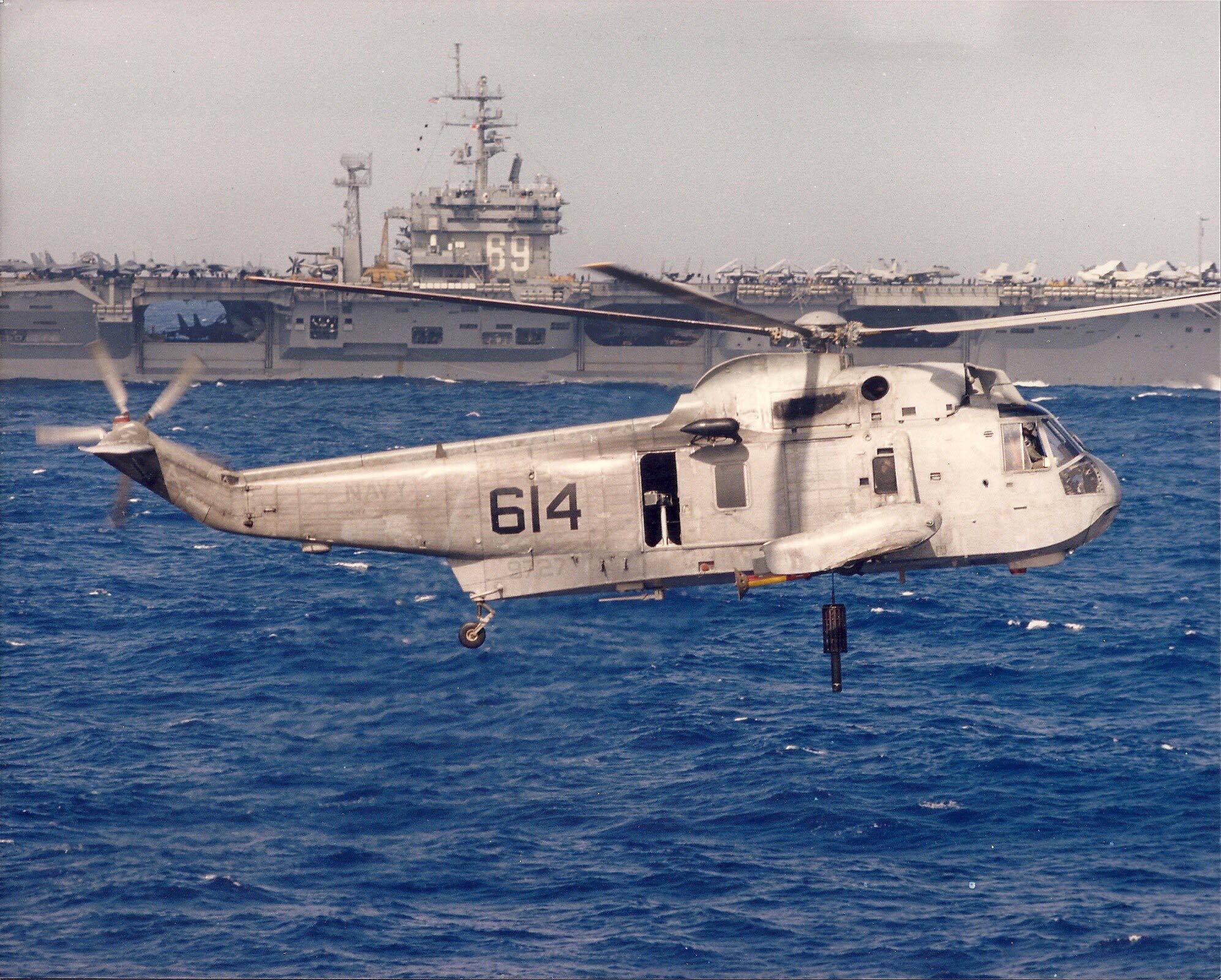
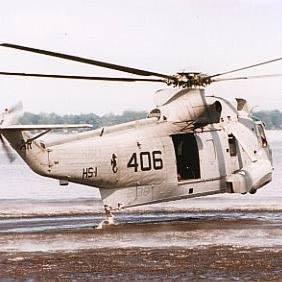
In this Episode of the Hangar Deck Podcast, the team discusses Flying US Navy Helicopters with Helicopter PIlot, CDR Sam Maroon (ret.). Sam discusses dynamics of flying as a Helicopter Pilot, large carrier based helicopters to include water landings. Sam talks candid about landing and flying this awesome cold war carrier based anti submarine helicopter. Listen to this great Episode on being a Helicopter Pilot and thanks for supporting our Podcast.
Episode #30. Turkish Air Force F-16 shoots down Russian SU-24 Fencer.
In this Episode of the Hangar Deck Podcast, the team discusses the Russian SU-24 being shot down over the Turkey Syria Border. A Turkish Air Force F-16 fighter jet shot down a Russian Sukhoi Su-24M bomber aircraft near the Syria–Turkey border on 24 November 2015. According to Turkey, the aircraft whose nationality was unknown at the time was fired upon while in Turkish airspace because it violated the border up to a depth 1.36 miles for about 17 seconds after being warned to change its heading 10 times over a period of five minutes. The Russia Defense Ministry denied the aircraft ever left Syrian airspace, counter-claiming that their satellite data showed that the Sukhoi was about 1,100 yards inside Syrian airspace when it was shot down. The US State Department said that the US independently confirmed that the aircraft’s flight path violated Turkish territory, and that the Turks gave multiple warnings to the pilot, to which they received no response. Russian president Vladimir Putin said that the US knew the flight path of the Russian jet and should have informed Turkey; two US officials said that Russia did not inform the US military of its jet’s flight plan.
The Russian pilot and weapon systems officer both ejected from the aircraft. The weapon systems officer was rescued, the pilot was shot and killed by Syrian Turkmen rebel ground fire while descending by parachute. A Russian naval infantryman from the search-and-rescue team launched to retrieve the two airmen was also killed when a rescue helicopter was shot down by the rebels.
The shoot down was the first destruction of a Russian or Soviet Air Forces warplane by a NATO member state since the Korean War. Reactions to the incident included denunciation from Russia and an attempt to defuse the situation by NATO afterwards. Russia deployed the guided missile cruiser Moskva armed with S-300F (SA-N-6 Grumble) long-range SAM missiles off the Syrian coast near Latakia and S-400 (SA-21 Growler) mobile SAM systems to Khmeimim airbase.
The Hangar Deck Podcast would like to thank our audience for the continued support on our venture. We reached a milestone of over 7,000 downloads and continue to grow our audience.
The Hangar Deck Podcast Team continues to strive and bring great interviews for the aviation enthusiast. Tell us how we are doing by dropping Pitchlock Pete a direct comment at pitchlockpete@thehangardeck.com.
Episode #29. The British Airways 777-200ER Engine Failure.
The Hangardeck Podcast is back from the Summer Break. Pete, Ed, Rick and Andy jump right back into the studio and discuss the most recent British Airways Catastrophic Engine Failure.
The NTSB most recent press release regarding the British Airways 777-200ER:
As part of its ongoing investigation into Tuesday’s engine fire that occurred during takeoff of British Airways flight 2276, a Boeing 777, at McCarran International Airport (LAS), the NTSB today released the following investigative update.
Casinos along the Las Vegas Strip can be seen behind a plane that caught fire at McCarren International Airport, Tuesday, Sept. 8, 2015, in Las Vegas. An engine on the British Airways plane caught fire before takeoff. (AP Photo/John Locher)
NTSB investigators arrived on scene Wednesday morning local time to begin the on-scene investigation. The NTSB investigative team includes experts in powerplants, airplane systems, and fire. The following groups will be organized: powerplants, airworthiness (airplane structure, systems, and fire), flight data recorder and cockpit voice recorder.
Parties to the NTSB investigation are the Federal Aviation Administration (FAA), The Boeing Company, and GE Aviation. In accordance with the International Civil Aviation Organization (ICAO) Annex 13, the UK Air Accidents Investigations Branch (AAIB), as the State of the Operator, has appointed an accredited representative to assist the investigation. The UK accredited representative has initially appointed British Airways and the UK Civil Aviation Authority as technical advisers.
The following are the initial factual findings:
British Airways 777-200ER, flight 2276, equipped with two GE90-85B engines, registration G-VIIO, was operating under the provisions of 14 Code of Federal Regulations (CFR) Part 129 and was en route to London – Gatwick Airport (LGW), Horley, England.
- There were 157 passengers, including 1 lap child, and 13 crew members on board. There were several minor injuries as a result of the evacuation (mostly abrasions).
- The flight data recorder, cockpit voice recorder and quick access recorder have arrived at the NTSB Vehicle Recorder Laboratory and are currently being downloaded.
- On Tuesday evening, the airplane was photographed and the runway debris documented by FAA and airport officials before airplane was towed to secluded area of the airport (in order to reopen the runway).
- Initial examination of the British Airways 777-200ER left engine revealed multiple breaches of the engine case in the area around the high pressure compressor.
- Examination of the material recovered from runway found several pieces of the high pressure compressor spool (approximately 7-8 inches in length).
- Initial examination of the airplane by NTSB revealed that the left engine and pylon, left fuselage structure and inboard left wing airplane were substantially damaged by the fire. This damage will be documented over the next several days.
A damaged British Airways 777-200ER sits at McCarran International Airport Wednesday, Sept. 9, 2015, in Las Vegas. An engine caught fire before takeoff of British Airways Flight 2276 Tuesday forcing the evacuation of the crew and passengers. (AP Photo/John Locher)
The power-plants and airworthiness groups will continue documenting the airplane and engine over the next several days. It is anticipated that once the tooling is in place, the left engine will be removed and shipped to a facility to conduct a full tear down.
Pete, Ed, Rick and Andyare happy to be back in action and have some great Episodes coming up. Stay Tuned for some great Aviation Talk for the Aviation Enthusiast.
Episode #28. The Grey Beard Series – Funny Stories from the Washrack.
The Grey Beard Series is all about Aircraft Maintenance Stories from experienced military and commercial aircraft technicians. The Sarcasm lamp is lit.
In this Episode, Pitchlock Pete’s panel of aviation contributors include former US Navy and Commercial Technicians discussing the dreaded aircraft wash and horror stories from the Washrack. We promise it will be downright silly.
The Hangar Deck Podcast would like to thank our listeners for the continued support on our adventure. We have reached a milestone of over 6,000 downloads and continue to grow our shows and audience. If you would like to be a guest on The Hangar Deck Podcast, contact us at Pitchlockpete@hangardeck.com. The Hangar Deck Podcast Team continues to strive and bring our listeners a great show.
Episode #27. The Boeing 747-400 Cargo Aircraft with Mr. Brian Mills.
In this Episode of the Hangar Deck Podcast, the team discusses the Boeing 747-400 Cargo Aircraft with Pilot Brian Mills.
The Boeing 747-400 is a major development and the best-selling model of the Boeing 747 family of jet airliners. While retaining the four-engine wide-body layout of its predecessors, the 747-400 embodies numerous technological and structural changes to produce a more efficient airframe. Its most distinguishing features versus preceding 747 models are 6-foot (1.8 m) winglets mounted on 6-foot (1.8 m) wing tip extensions, which are found on all 747-400s except for Japanese domestic market versions.
The 747-400 is equipped with a two-crew glass cockpit, which dispenses with the need for a flight engineer, along with more fuel-efficient engines, an optional fuel tank in the horizontal stabilizer, and revised fuselage/wing fairings. The aircraft also features an all-new interior with upgraded in-flight entertainment architecture. As on the 747-300, passenger variants include a stretched upper deck as standard. The model has a maximum capacity of 660 passengers with the 747-400D variant, and can fly non-stop for up to 7,670 nautical miles (14,200 km) with maximum payload, depending on model.
Northwest Airlines first placed the 747-400 in commercial service in February 9, 1989. The 747-400 was produced in passenger (−400), freighter (−400F), combi (−400M), domestic (−400D), extended range passenger (−400ER) and extended range freighter (−400ERF) versions. The 747-400 is the second-most recent version of the Boeing 747 aircraft family, having been superseded by the more economical and advanced Boeing 747-8. The last −400 model was delivered in December 2009.
As many 747-400s are now more than 20 years old, airlines are beginning to replace them. Airlines using the 747-400 have accelerated its retirement (as at 2015) and are replacing the model with more fuel efficient aircraft. The 747-400’s leasing, resale and salvage value has dropped steeply because it is relatively expensive to operate. In most cases, it is being replaced with wide-body twin-engine aircraft like B777 or A330. The change in emphasis from hub and spoke operations to point-to-point flights has also reduced the need for jumbo jets. For example, Delta Airlines has reduced the number of flights it operates from the United States to Narita International Airport that are intended to transfer passengers to other destinations in Asia. Instead, Delta will utilize twin-engine widebody aircraft operating from an expanded hub at Seattle-Tacoma International Airport. Total capacity will be cut, but consequentially load factors will increase. In April 2015, Delta announced it would accelerate the retirement of its 747-400 aircraft and replace them either with Airbus A330 aircraft reassigned from cancelled international runs, or with new Airbus A350 aircraft now on order. That will leave just six 747s flying for the airline in 2015. Delta could not keep the 747s full without deeply discounting ticket prices; the discounts and increased maintenance required of a four-engine aircraft led to a drag on profits. Moreover, economic weakness in air cargo markets has slowed demand for cargo conversions. Since the cost of replacing a 747-400 is high (an airline must purchase or lease another wide-body), some operators choose to fly the 747-400 to the conclusion of its accepted useful life and then scrap it. The current parts resale value for this aircraft has been reduced to its engines. Several airlines have retired their 747-400 from the trans-pacific market. Remaining operators in 2014 include Qantas, British Airways and United. United is retaining its 23 747-400s for now, but the airline’s deployment of them also reflects a change in emphasis from Asian hubs to domestic hubs, meaning that it will have more direct flights from the United States to secondary Asian market cities. This may reduce the need for jumbo jets.
747-400
A large mostly-white four-engine jet airliner with golden stylized bird design, on approach towards left of screen with landing gear extended Boeing 747-400 of Singapore Airlines, the type’s first international operator.
The original variant of the redesigned 747, the 747-400 debuted an increased wingspan, winglets, revised engines, and a glass cockpit which removed the need for a flight engineer. The type also featured the stretched upper deck (SUD) introduced with the 747-300. The passenger model formed the bulk of 747-400s sold, and 442 were built.
In 1989, a Qantas 747-400 flew non-stop from London to Sydney, a distance of 9,720 nmi (11,190 mi, 18,001 km), in 20 hours and 9 minutes to set a commercial aircraft world distance record. As of 2014, this is the fastest heavyweight flight between London and Sydney. This was a delivery flight with no commercial passengers or freight on board. During testing, the first 747-400 built also set a world record for the heaviest airliner takeoff on June 27, 1988, on a flight to simulate heavy-weight stalls. The flight had a takeoff weight of 892,450 pounds (404,810 kg), and in order to satisfy Fédération Aéronautique Internationale regulations, the aircraft climbed to a height of 6,562 feet (2,000 m).
747-400F
The 747-400F (Freighter) is an all freight version of the 747-400. While using the updated systems and wing design of the passenger versions, it features the original short upper deck found on the classic 747s in order to save weight. The model’s first flight was on May 4, 1993, and it entered service with Cargolux on November 17, 1993. Major customers included Atlas Air, Cargolux, China Airlines, Korean Air, Nippon Cargo Airlines, Polar Air Cargo, and Singapore Airlines. The −400F can be easily distinguished from the passenger −400 by its shorter upper-deck hump and lack of windows along the main deck.
The 747-400F has a main deck nose door and a mechanized cargo handling system. The nose door swings up so that pallets or containers up to 40 ft (12 m) can be loaded straight in on motor-driven rollers. An optional main deck side cargo door (like the 747-400M (Combi)) allows loading of dimensionally taller cargo modules. A lower deck (“belly”) side door allows loading of unit load devices (ULD) up to 1,63 m height. Boeing delivered 126 Boeing 747-400F aircraft with no unfilled orders as of November 2009. The last −400F was delivered to Nippon Cargo Airlines on August 2, 2008.
747-400M
A KLM Boeing 747-400 Combi, on short final to JFK Airport in New York City
The 747-400M (a passenger/freight or “Combi” variant) first flew on June 30, 1989 and entered service with KLM on September 12, 1989. Based on the successful Combi versions of the Classic 747s, the −400M has a large cargo door fitted to the rear of the fuselage for freight loading to the aft main deck cargo hold. A locked partition separates the cargo area from the forward passenger cabin, and the −400M also features additional fire protection, a strengthened main deck floor, a roller-conveyor system, and passenger-to-cargo conversion equipment. The last 747-400M was delivered to KLM on April 10, 2002.
747-400D
The 747-400D (Domestic) is a high density seating model developed for short-haul, high-volume domestic Japanese flights. This model is capable of seating a maximum of 568 passengers in a two-class configuration or 660 passengers in a single-class configuration.
The −400D lacks the wingtip extensions and winglets included on other variants. Winglets would provide minimal benefits on short-haul routes, while adding extra weight and cost. The −400D may be converted to the long range version if needed. The 747-400D can be distinguished from the otherwise similar-looking 747-300 by the extra windows on the upper deck. These allow for extra seating at the rear of the upper deck, where a galley would normally be situated on longer flights. In total, 19 of the type were built, with the last example delivered to All Nippon Airways on February 11, 1996. This variant was retired with ANA retiring their last 747 on March 31, 2014.
747-400ER
The 747-400ER (Extended Range) was launched on November 28, 2000 following an order by Qantas for six aircraft. The model was commonly referred to as the ‘910k’ signifying its maximum weight achieved via structural modifications and modified landing gear. This was the only order for the passenger version, chosen by Qantas to allow for full loads between Melbourne and Los Angeles, particularly in the western direction. The −400ER can fly 500 miles (805 km) further, or carry 15,000 lb (6,800 kg) more freight. The first 747-400ER was used as a test flight airplane and painted in Boeing colours, registration N747ER. Qantas received the first delivery of a 747−400ER Registration VH-OEF on October 31, 2002; this was the second airplane built. The flight test airplane was refurbished and delivered in Qantas livery. The 747-400ER included the option of one or two additional 3,240 US gallon body fuel tanks in the forward cargo hold, but no customers ordered the tanks. Manufactured by Marshall Aerospace, these tanks utilized metal to metal honeycomb-bonded technology to achieve a high fuel volume-to-dry weight ratio. The tanks featured a double wall, integrated venting system, and achieve fuel control via a modified Fuel System Management Card (FSMC) which optimizes fuel transfer into the Center Wing Tank (CWT) in flight along with the fuel transfer from the Horizontal Stabiliser Tank (HST). The tank is removable using tooling that interfaces with the cargo loading system. Similar technology has been used by Marshall in the development of body fuel tanks for the Boeing 777-200LR and Boeing P-8A Poseidon. Other changes to the 747-400ER include relocation of oxygen system components and the potable water system tanks and pumps since the body fuel tanks prevent access to the standard locations.
747-400ERF
Large four-engine jet freighter whose body are painted in two blue and white blue half has large lettering. The stabilizer is halves; the top mostly white. It is on approach towards left of screen with landing gear extended
The 747-400ERF (747-400ER Freighter) is the freight version of the −400ER, launched on April 30, 2001.[17] The 747-400ERF is similar to the 747-400F, except for increased gross weight capability which allows it to carry more cargo weight. Unlike the 747-400ER, no customers ordered the optional body fuel tanks (cargo compartment fuel tanks). The 747-400ERF has a maximum takeoff weight of 910,000 pounds (412,769 kg) and a maximum payload of 248,600 pounds (112,760 kg). It offers cargo airlines the choice of either adding 22,000 pounds (9,980 kg) more payload than other 747-400 freighter variants, or adding 525 nautical miles (972 km) to the maximum range.
The -400ERF has a range of 5,700 miles (9,200 km) with maximum payload, about 326 miles (525 km) farther than the standard 747-400 freighter, and has a strengthened fuselage, landing gear, and parts of its wing, along with new, larger tires. The first −400ERF was delivered to Air France (via ILFC) on October 17, 2002. Boeing has delivered 40 Boeing 747-400ERFs with no outstanding orders as of 2009. The last 747-400 was a −400ERF delivered on December 22, 2009 to Kalitta Air. The new 747-8 Freighter has more payload capacity, but less range than the 747-400ERF.
747-400 Boeing Converted Freighter
The 747-400BCF (Boeing Converted Freighter), formerly known as the 747-400SF (Special Freighter), is a conversion program for standard passenger 747-400s. The project was launched in 2004 and will be done by approved contractors such as TAECO, KAL Aerospace and SIA Engineering. The first Boeing 747-400BCF was redelivered to Cathay Pacific Cargo and entered service on December 19, 2005. This kind of converting procedure is located at Xiamen Gaoqi International Airport in China.
The 747-400BDSF (Bedek Special Freighter) is another converted version freighter by Israel Aerospace Industries (IAI). The first 747-400BDSF was redelivered to Air China Cargo.[citation needed] EVA Air’s several Boeing 747-45EM planes have been converted as BDSF model after retiring from passenger service upon the delivery of Boeing 777-300ER planes. This kind of converting procedure is located at Ben Gurion International Airport in Tel Aviv, Israel.
Neither the 747-400BCF nor the 747-400BDSF have a nose cargo door; freight can only be loaded through the side cargo door.
747 Large Cargo Freighter
Boeing announced in October 2003 that, because of the amount of time involved with marine shipping, air transport would be the primary method of transporting parts for the Boeing 787 Dreamliner. Pre-owned passenger 747-400 aircraft have been converted into an outsize, “Large Cargo Freighter” (LCF) configuration to ferry sub-assemblies to Everett, Washington for final assembly. The LCF has a bulging fuselage similar to that of the Aero Spacelines Super Guppy or Airbus Beluga cargo aircraft.
The conversion, designed by Boeing engineers from Puget Sound, Moscow and Canoga Park, Cal., and Gamesa Aeronáutica in Spain, was carried out in Taiwan by a subsidiary of the Evergreen Group. Boeing purchased four second-hand aircraft and had them all converted; the fourth and final LCF took its first flight in January 2010.
Delivery times are as low as a day using the 747 LCF, compared to up to 30 days for deliveries by ship. The LCF has the largest cargo hold of any aircraft and can hold three times the volume of a 747-400F freighter. The LCF is not a Boeing production model and has not been offered for sale to any customers. The LCFs are intended for Boeing’s exclusive use.
In this Episode, Pitchlock Pete’s panel of Aviation Contributers included Fast Eddie Raging Rick, and our special Guest Mr. Brian Mills.
We would like to thank our listeners for the continued support on our adventure. The team has reached a milestone of over 7,000 downloads and continue to grow our shows and audience. If you would like to be a guest on The Hangar Deck Podcast, contact us at Pitchlockpete@thehangardeck.com. We continue to strive to bring our listeners a great and fun listening experience.
Episode #26. Aircraft Pick of the Week. The North American B-25 Mitchell.
In this Episode of the Hangar Deck Podcast, the team discusses our Aircraft Pick of the week. The B-25 Mitchell. The B-25 was derived from the 1939 NA-40B company proposal that was not accepted by the Army Air Corps.
The Air Corps issued a circular (Number 38-385) in March 1938 describing the performance they required from the next bombers – a payload of 1,200 lb (540 kg) with a range of 1,200 mi (1,900 km) at more than 200 mph (320 km/h). Those performance specifications led NAA to submit their NA-40 design. The NA-40 had benefited from the North American XB-21 (NA-39) of 1936 which was the company’s partly-successful design for an earlier medium bomber that had been initially accepted and ordered but then cancelled. However, the company’s experience from the XB-21 contributed to the design and development of the NA-40. The single NA-40 built flew first at the end of January 1939. It went though several modifications to correct problems. These improvements included fitting 1,600 hp Wright R-2600 “Double Cyclone” radial engines, in March 1939 which solved the lack of power.
In March 1939, North American delivered the substantially redesigned and improved NA-40 (as NA-40B) to the United States Army Air Corps for evaluation. It was in competition with other manufacturers’ designs (Douglas 7B, Stearman X-100 and the Martin Model 167F) but failed to win orders. The aircraft was originally intended to be an attack bomber for export to the United Kingdom and France, both of which had a pressing requirement for such aircraft in the early stages of World War II. However, the French had already opted for a revised Douglas 7B (as the DB-7). Unfortunately, the NA-40B was destroyed in a crash on 11 April 1939 while undergoing testing. Although the crash was not considered due to a fault with the aircraft design, the Army ordered the DB-7 as the A-20.
The Air Corps issued a specification for a medium bomber in March 1939: 2,400 lb (1,100 kg) over 1,200 mi (1,900 km) at 300 mph (480 km/h) NAA used the NA-40B design to develop the NA-62 which competed for the medium bomber contract. There was no YB-25 for prototype service tests. In September 1939, the Air Corps ordered the NA-62 into production as the B-25, along with the other new Air Corps medium bomber, the Martin B-26 Marauder “off the drawing board”.
The NA-40 lost out to the Douglas A-20 in the attack type competition, but NAA developed a more advanced design, the NA-40B, which in turn lead to the NA-62, B-25 Mitchell bomber.
Early into B-25 production, NAA incorporated a significant redesign to the wing dihedral. The first nine aircraft had a constant-dihedral meaning the wing had a consistent, upward angle from the fuselage to the wingtip. This design caused stability problems. A slight anhedral on the outboard wing sections nullified the problem and gave the B-25 its gull wing configuration. Less noticeable changes during this period included an increase in the size of the tail fins and a decrease in their inward cant.
NAA continued design and development in 1940 and 1941. Both the B-25A and B-25B series entered AAF service. The B-25B was operational in 1942. Combat requirements lead to further developments. Before the year was over, NAA was producing the B-25C and B-25D series at different plants. Also in 1942, the manufacturer began design work on the cannon-armed B-25G series. The NA-100 of 1943 and 1944 was an interim armament development at the Kansas City complex know as the B-25D2. Similar armament upgrades by U.S-based commercial modification centers involved about half of the B-25G series. Further development led to the B-25H, B-25J and B-25J2. The gunship design concept dates to late 1942 and NAA sent a field technical representative to the SWPA. The factory produced B-25G entered production during the NA-96 order followed by the redesigned B-25H gunship.The B-25J reverted to the bomber role but it too could be outfitted as a Strafer.
North American Aviation manufactured the greatest number of aircraft in World War II. It was the first time a company had produced trainers, bombers and fighters simultaneously (the AT-6/SNJ Texan, B-25 Mitchell, and the P-51 Mustang). It produced B-25s at both its Inglewood main plant and an additional 6,608 aircraft at its Kansas City, Kansas plant.
Postwar, the USAF placed a contract for the TB-25L trainer in 1952. This was a modification program by Hayes of Birmingham, Alabama. Its primary role was reciprocal engine pilot training.
A development of the B-25 was the North American XB-28, designed as a high-altitude bomber. Two prototypes were built with the second prototype, the XB-28A, evaluated as a photo-reconnaissance platform but the aircraft did not enter production.
In this Episode, Pitchlock Pete’s panel of Aviation Contributors included Fast Eddie Raging Rick, Andy White and our special Guest Mr. Steve Zvara.
We would like to thank our listeners for the continued support on our adventure. The team has reached a milestone of over 7,000 downloads and continue to grow our shows and audience. If you would like to be a guest on The Hangar Deck Podcast, contact us at Pitchlockpete@thehangardeck.com. We continue to strive to bring our listeners a great and fun listening experience.









